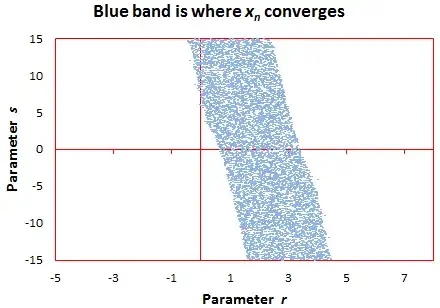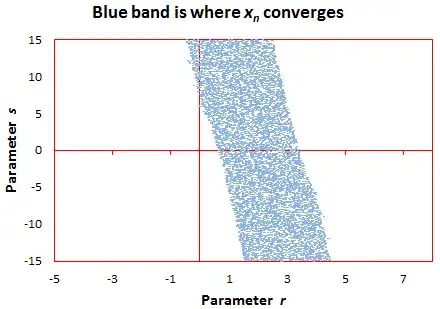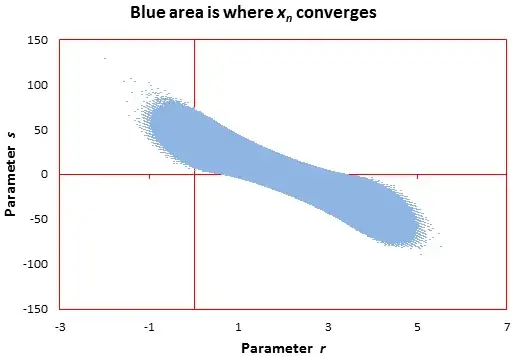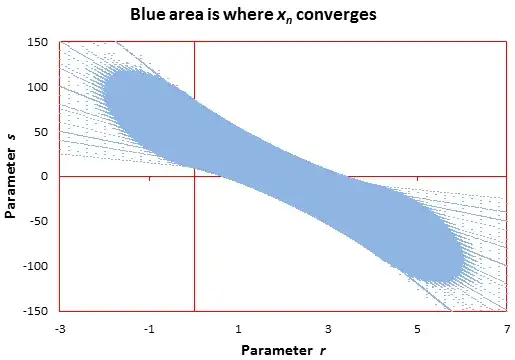What are the conditions on $a_1, b_1, a_2, b_2, a_3, b_3$ and on the initial values $x_1, x_2$ for $x_n$ to converge to a value different from zero? We can assume that $a_1=1$. Also we need $a_1 = a_2 - a_3$ and $b_1 = b_2 - b_3$, but this is not enough to guarantee convergence.
We can even assume that $x_1=0, x_2 = 1$, see detailed discussion on these recurrences in my previous question, here. In short, there is only 3 free parameters, characterizing all the recurrences that do converge.
As a starting point, see the chart below for
$$2(n+2)x_{n+2}=(r (n+2) + s)x_{n+1} + ((2-r)(n+2)-s)x_n$$
with $x_0=0, x_1=1$. This 2-dimensional plot represents one slice of all the possible 3-dimensional parameter representations leading to divergence. The X-axis represents $r$, the Y-axis represents $s$. I tried with 400,000 values of $(r, s)$ to check which ones result in actual convergence. The blue dots represent the points $(r,s)$ such that $|x_{40} - x_{39}|<0.000001$. The blue area is full of holes because I only used 400,000 values of $(r, s)$ in this experiment. If you use 10,000,000 values, the boundaries will be smoother, and the holes in the blue area will vanish.
These recurrences can be represented by generalized hypergeometric functions, and according to Wikipedia, the convergence status is typically studied separately for each recurrence. Yet my chart suggests that there is a general law governing the convergence (or lack of) for these recurrences. It is an interesting math problem, and also of interest to statisticians who are interested in estimating the boundaries (in the parameter space) of the convergence region, and test whether the boundaries are parallel lines.
More cases
Here we look at the general case, which can be written as: $$2(n+q)x_{n+2}=(r (n+q) + s)x_{n+1} + ((2-r)(n+q)-s)x_n$$
The charts below give some insights about the shape of the convergence regions / boundaries in the full 3-dimensional parameter space.
Case $q=1$:
Case $q=5$:
Time permitting, I will try to create a 3-D picture of the boundary, maybe a rotating one so that it can be viewed under different angles.








